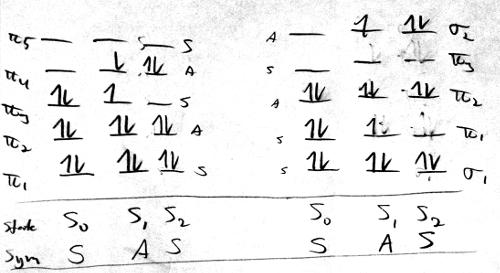This is an exam question. I am to construct the orbital and state correlation diagram for one of the reaction below (disrotation or conratation). Also, I should explain whether the reaction is thermally or photochemically allowed.
I know the procedure to these kinds of problems:
- Draw (Hückel) $\pi$π orbitals of the reactant
- Draw relevant orbitals of the product. Here: $\pi$π and newly formed $\sigma$σ orbitals
- Identify the symmetry element that is preserved through the reaction (common for reactant and product)
- Assign symmetry labels to orbitals
- Correlate orbitals of same symmetry
I know what the molecular orbitals of the reactant looks like, but I am unsure about those of the product. Here's what I have
Using the vertical reflection plane perpendicular the screen, I get the MO's of both reactant and product (in the order from bottom to top) to have the following symmetries: S, A, S, A, S. However, the orbital correlation diagram will be very boring if this is correct, and the reaction will be allowed both thermally and photochemically.
So are the product orbitals correct? I just assumed that an in-phase and out-of-phase combination of the $\pi$π orbitals on C1 and C5 lead to the desired $\sigma$σ orbitals. Or perhaps my ordering is incorrect?
Final orbital correlation diagram:

=======================
Concerning the state correlation diagram, I look at the electron configurations of the states of interest, which I take to be $S_0$, $S_1$, and $S_2$. I find the symmetry of each state by multiplying the symmetry of each electron in every MO. However, should I just draw straight lines between each state? The corresponding states are of the same symmetry, so no avoided crossings occur. I don't see whether the reaction is thermally or photochemically allowed from the state correlation diagram. Or did I do something wrong?




